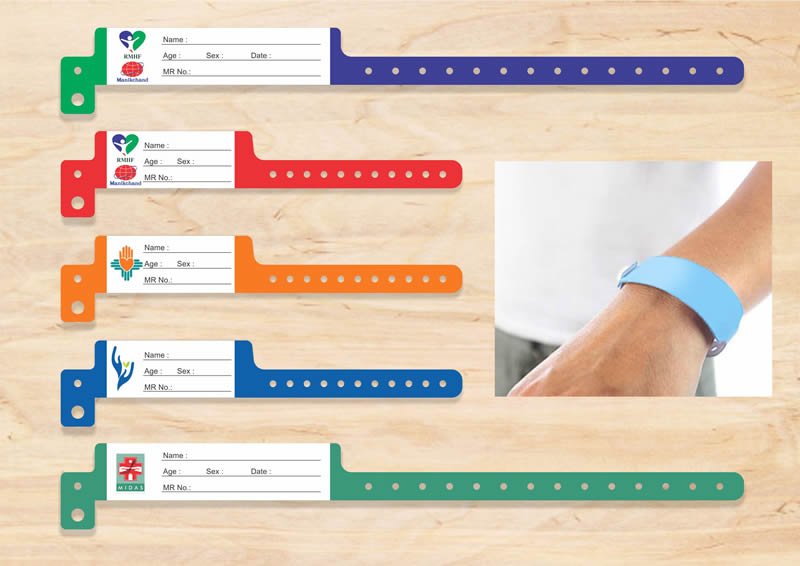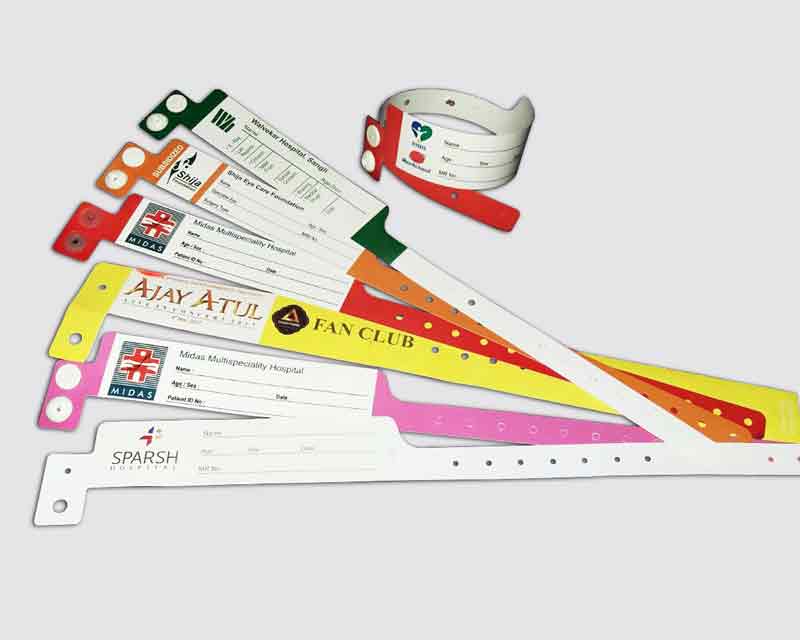The Rising Need for Advanced Patient Identification Bands in Modern Healthcare Facilities
Wiki Article
Exploring the Different Kinds Of Patient Identification Band Utilized in Medical Facilities
In the intricate globe of healthcare, the crucial duty of Patient Identification bands typically goes unnoticed. These bands, varying from basic paper wristbands to sophisticated RFID bands, develop the backbone of Patient safety and security protocols, making certain accuracy in Patient Identification.Comprehending the Value of Patient Identification Bands
While they may seem like mere accessories, Patient Identification bands play a crucial role in clinical facilities. These bands serve as a critical tool for validating Patient identification, protecting against clinical mistakes associated to misidentification. Patient Identification bands also help in simplifying administrative tasks, guaranteeing accurate record-keeping and billing.Traditional Paper Wristbands: Their Use and Limitations
Standard paper wristbands have actually been a staple in Patient Identification across different clinical centers. While their usage prevails, they nurture specific constraints that might influence their effectiveness in Patient administration. This area will focus on the range of their application and the inherent drawbacks linked with their usage.
Paper Wristbands: Use Extent
In the world of Patient Identification, paper wristbands have actually long held a critical function. These bands are commonly made use of in outpatient settings, where the Patient's stay is momentary. In spite of improvements in modern technology, the humble paper wristband continues to be a cost-efficient and dependable remedy for Patient Identification in numerous medical care situations.Limitations of Paper Wristbands
In spite of their extensive use, paper wristbands are not without their drawbacks. Their physical toughness is just one of the substantial restrictions. Exposure to water, sweat, or rough handling can provide them unreadable or perhaps trigger them to disintegrate. Furthermore, paper wristbands typically do not have the technological abilities of even more modern choices, such as barcoding or RFID chips, restricting their functionality to just presenting written information. The inability to upgrade or change the information on the wristband is one more drawback. In addition, if the info is transcribed, legibility can be endangered, resulting in potential misidentification. Lastly, paper wristbands can trigger discomfort or skin inflammation to some clients, particularly when worn for prolonged periods.Barcoded Wristbands: Advancements in Patient Identification
While Patient Identification has long been an essential aspect of healthcare, the development of barcoded wristbands signifies a substantial leap forward. These bands leverage the simplicity of barcoding innovation, allowing for Patient details to be swiftly checked and accessed. They improve the rate and accuracy of Patient Identification, reducing the threat of clinical mistakes related to misidentification.Superhigh Frequency Identification (RFID) Bands: an Action Towards Futuristic Medical Care
The advancement of Patient Identification bands has actually brought regarding the introduction of Radio Frequency Identification (RFID) Bands (patient identification band). These innovative gadgets existing vital advantages for health care centers, offering an extra efficient and technically progressed methods of Patient Identification. The execution of RFID in healthcare is a significant action towards a more advanced technique to Patient monitoring and safety and securityUnderstanding RFID Bands

RFID Bands: Key Advantages
Mostly, these bands boost Patient security by supplying accurate, instant Identification, therefore minimizing medical errors. RFID bands can keep a substantial quantity of Patient data, including medical background and allergic reactions, allowing individualized treatment. Overall, RFID bands represent a considerable innovation in Patient Identification technology, benefiting both clients and medical care service providers.
Carrying Out RFID in Medical Care
These bands give a seamless means to track and determine people, guaranteeing their safety and boosting efficiency in therapy procedures. RFID bands decrease clinical errors by giving precise Patient Identification, which is critical in stopping misdiagnosis or wrong medication management. Therefore, the execution of RFID bands is a considerable action towards boosting Patient safety and security and health care distribution.
Color-Coded Wristbands: Aiding in Quick and Accurate Diagnosis
In the bustling setting of a clinical facility, color-coded wristbands have emerged as vital devices for swift and specific Identification of a client's medical problem. These wristbands, put on by individuals, bring specific colors that correspond to various clinical conditions or statuses. As an example, red might indicate allergic reaction threats, while yellow may represent a fall risk. This system is designed to supply instant visual hints to doctor, improving Patient security and care quality. In emergency situation circumstances, the use of these wristbands permits rapid decision-making. Nonetheless, the effectiveness of color-coded wristbands relies on the uniformity of shade interpretation throughout health care establishments, requiring common criteria for consistent application.Methods for Reliable Execution and Monitoring of Patient ID Bands
Achieving optimal use Patient Identification bands demands a well-structured strategy for their execution and management. The primary step involves training all health and wellness employees on the importance of correctly applying and reading these bands. Medical facilities must systematize the use of ID bands across all departments, guaranteeing harmony and reducing inconsistencies. Normal audits ought to be performed to validate adherence to plans and to correct any type of disparities. Patient education is likewise crucial; individuals should understand the purpose of the bands and the demand for their consistent wear. patient identification band. navigate to this site It's important to have a backup strategy in location, such as barcode scanning or biometrics, to ensure that Patient Identification is never ever endangered.
Final thought
Patient Identification bands are critical in medical facilities to make certain safety and accuracy. Efficient implementation and management of these bands can substantially lower medical errors, increase performance, and boost overall Patient care.These bands, varying from basic paper wristbands to advanced RFID bands, develop the backbone of Patient safety methods, ensuring precision in Patient Identification.The advancement of Patient Identification bands has actually brought concerning the appearance of Radio Regularity Identification (RFID) Bands. On the whole, RFID bands represent a substantial innovation in Patient Identification innovation, profiting both patients and health care providers.
RFID bands lower medical mistakes by providing accurate Patient Identification, which is critical in preventing misdiagnosis or incorrect medicine hop over to here management. Patient education is likewise important; clients should understand the purpose of the bands and the need article for their consistent wear.
Report this wiki page